I live in southern Maine. We have WEATHER. Rain, nor’easters, hail, the occasional hurricane, snow, blizzards. Fog, sun, clouds, high winds, withering humidity. I welcome (or at least tolerate) all of it except in winter when the temperature hovers at freezing and instead of snow we get rain that freezes on the ground. Frozen ice and slush is the worst, especially for horses. Even with special studs on their shoes, the risk of horses slipping and falling is too great. The horses can’t be let out in this.
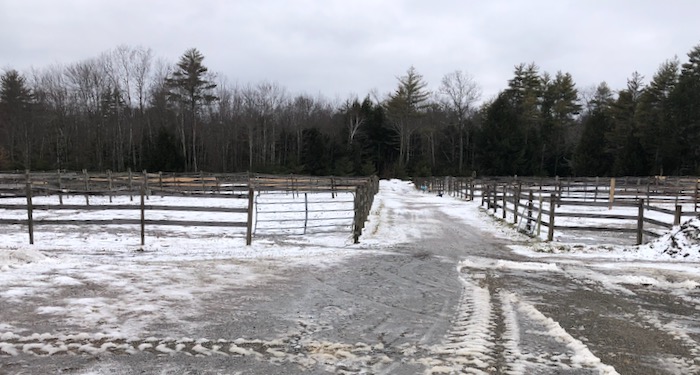
The horses have to stay in their stalls which isn’t optimal for their minds or bodies. They’re given extra hay to keep them busy chewing.
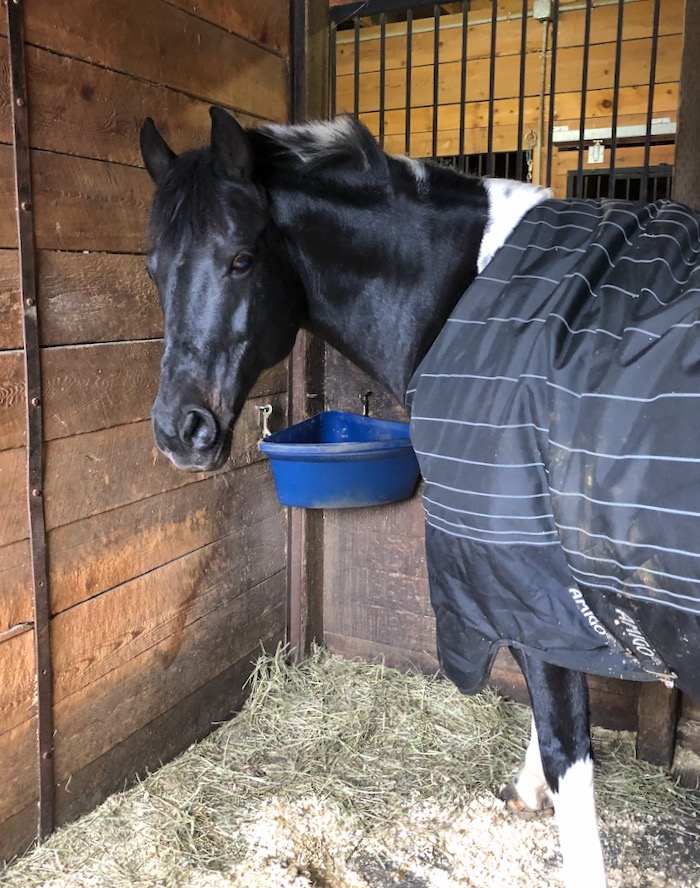
But they do get bored. Fortunately, Tonka is not one of those horses that gets filled up with pent-up energy until he explodes, but Tonka still appreciates at least one daily visit, being ridden, a grooming, and a change of scenery, even if that’s only in the aisle and indoor arena.
The mental stuff Tonka can handle, but immobility has physical risks. A horse’s digestive system is designed for walking a dozen miles daily, and grazing on mostly fresh grass. It’s a system that depends on constant inputs and outputs. It requires a lot of water to keep everything moving along. Grass (consumed when grazing outside) has a high moisture content, but in winter the horses eat almost entirely hay (essentially dried long-stemmed grasses); a horse Tonka’s size eats about 15 to 20 pounds of it! To wash it all down, a horse drinks 5 to 10 gallons of water a day. Most of that hay is undigestible roughage. For it to pass through the digestive tract, the horse needs to drink enough water to keep it soft. The horse also has to walk for the muscles that push things along to do their job. If everything is functioning correctly, a horse produces around 30 to 50 pounds of manure a day. It comes out in big piles, about 6 to 10 daily. We equestrians are obsessive about observing those piles of poop because they indicate the health status of our horses.
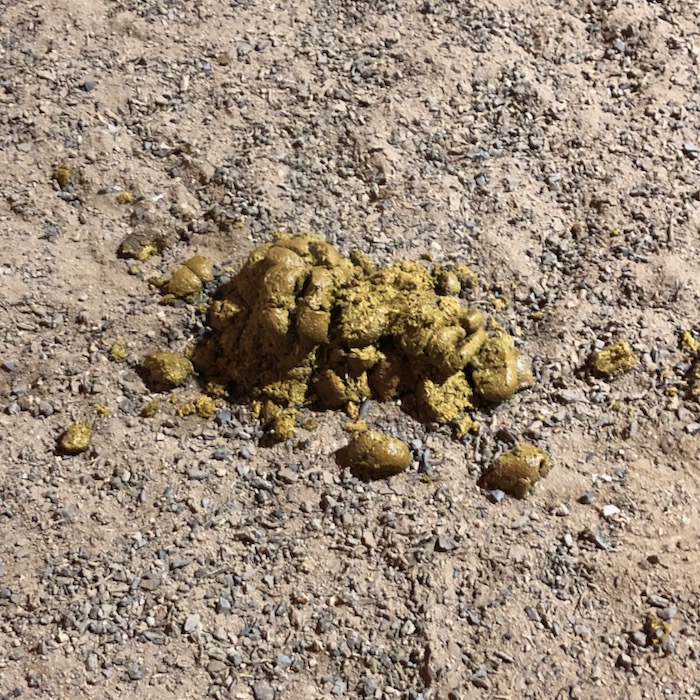
Colic, which is a general term that covers a range of digestive troubles, from impaction to twisted gut, is a major cause of horse mortality. We talk about “colic weather” with dread. Colic weather is when there are wildly fluctuating temperatures, which affects how much the horses move and what and how much they eat. Some horses are very fussy about the temperature of the water in their buckets. Right when you need them to be drinking full on to digest that hay, they drink less. We’ve been experiencing colic weather since Christmas.
Some horses are prone to colic. Not Tonka. In the seven years I’ve had him he hasn’t had one bout. But on Dec. 27 I noticed when bringing Tonka in from his paddock that he wanted to stop a couple of times and just stand. He was bright-eyed but was even slower than he usually is when led (Tonka does like to take his time walking back to the barn!) When I got on for our ride, Tonka pooped, which is normal. But then he pooped again. And again. Six times! He trotted out willingly, but made a noisy breath at each stride which can be a sign of distress. This was definitely not like him! Then he pooped again. I was about to have a lesson. Instead my trainer took Tonka’s temperature, which was normal, which meant that there was no need to panic yet. Generally, a horse who is colicking isn’t pooping, so seeing all of those manure piles was also a relief. On the other hand, there were too many piles. Perhaps Tonka had had a blockage, which was coming undone with the help of the walking. Luckily, my veterinarian was already on her way to the barn to ride (she leases a horse there) so I was able to discuss the situation with her. Although Tonka didn’t appear to be in immediate serious distress, with any hint of colic, it’s best to be proactive. We decided on a dose of banamine, some hand-walking, observation, and a warm, watery bran mash made by Arlene, the barn owner (who has concocted a “miracle mash” which always makes their tummies feel better and the digestive tracts get a move on.)
Tonka loved it.
That evening I returned to the barn to hand-walk Tonka again. He was fine and showed me so by dropping a nice normal poop.
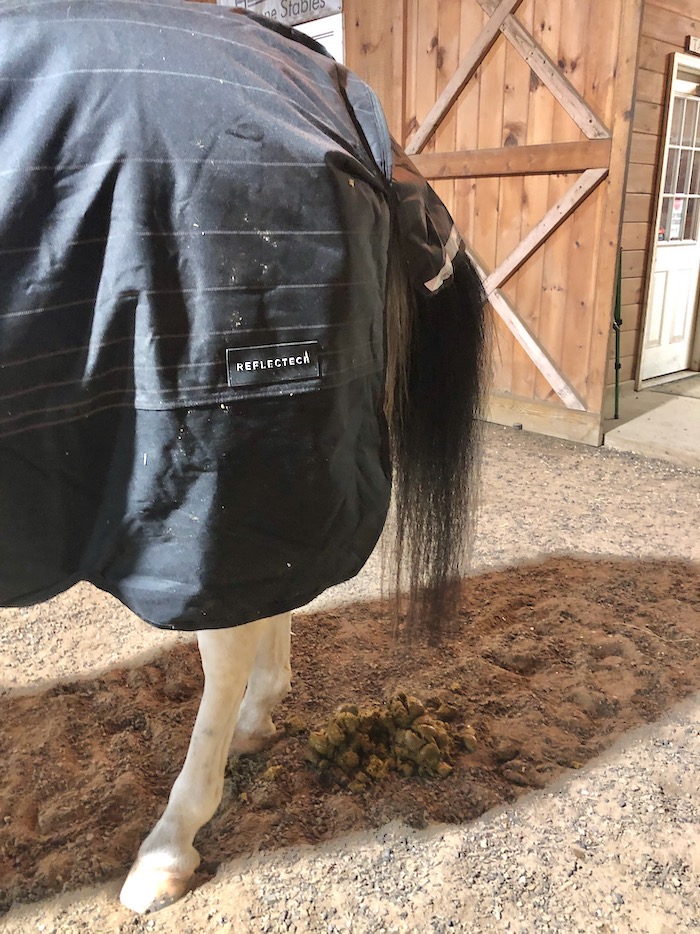
Since then, Tonka and his poops have been normal. But it’s still colic weather. After a drenching rain on New Years and then a sudden downswing in the temperature, the paths and paddocks are currently covered in thick ice. Turnout isn’t an option. Today at least Tonka’s runout was open. However, it was icy so he didn’t do much more than stand outside.
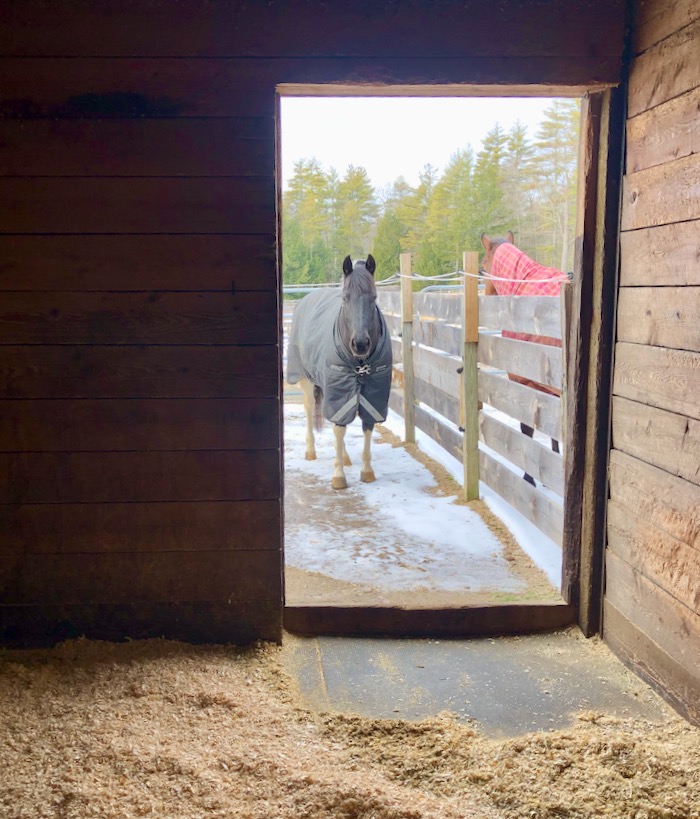
Limited movement and cold temperatures. I was immediately observant. I noted a normal pile of poop in Tonka’s recently cleaned stall. Good! Tonka was happy to see me and be tacked up. Also good! When I got on though, he kept wanting to stop. After ten minutes he was balky when I asked him to trot, so I walked another five minutes. Then Tonka pooped, seemed to loosen up, and he willingly and soundly trotted out. Was I being hyper-vigilant? Perhaps, but it does no harm, and might stave off a crisis. Knowing that the rest of the day Tonka would be mostly standing around, I rode for an hour, with lots of walking and easy trotting, and some forward canter. There weren’t any huffing breaths with each stride, nor was there excessive pooping. Whew!
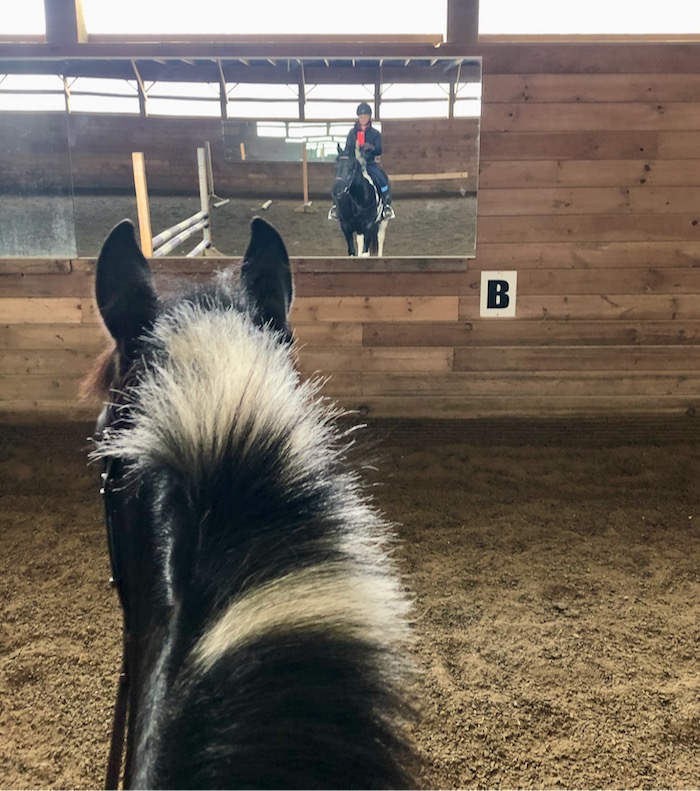
After riding the temperature rose just enough for me to be able to use a shovel to break up the ice in his runout. That will give him a little more space to move around in.
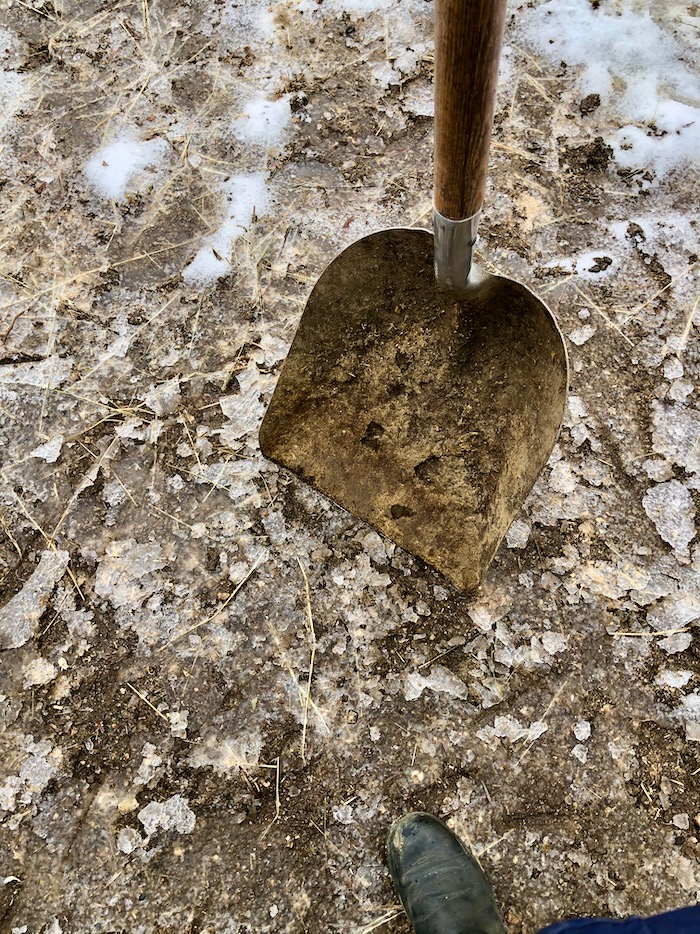
You keep a close eye on your horses and do what you can during colic weather. What are you being vigilant and observant about this winter?


I’ve also been lucky that my horses are not colic prone (knock wood). As we don’t have freezing winter temperatures here, our colic weather usually comes in the spring or the fall, when we are having warm, sunny weather and then a sudden swing to colder temps. With such a quick swing in the temperatures, the horses don’t drink like they should on the cold days and impaction can happen. It’s only happened once to a horse I’ve owned but that’s all it took for me to be super vigilant about it. My horses are pasture kept, so watching manure isn’t an option, but I do keep an eye on what they are drinking. Just for that reason, I do not have auto waterers so I can keep track. I have a 50 gallon trough for three horses, and along with their behavior, I watch what they are drinking on a daily basis.
Keeping an eye on that trough is essential! I bet you’re also vigilante about keeping it clean 🙂
I do about the same as you do, looking at poop piles to make sure they are moist and not to dry especially during colic weather. Just generally keep an eye on their attitude and condition. They have access to a salt block, but I put loose salt in their feed also, of course I have a stock tank heater so they don’t have to drink water too cold. And they are in a pasture so they walk around, their water and hang out barn and where we put hay are kind of far apart so they get exercise.
What a wonderful situation your horses are in. Tonka also gets loose salt in his diet. 1 tablespoon, twice daily. People don’t realize that salt blocks are designed for the rough tongues of cows. Few horses consume enough salt from licking blocks.
I’m taking care of an older mare Maggie with one eye that lived out 24/7 with a shed. Although it’s good for her, of course worry about blanket changes and making sure she has enough hay. There is free choice water from an automatic waterer so I can’t control that. Just making sure she is covered and has hay. It definitely is hard in the winter for the oldies .
She’s lucky to have your observant eye on her. Sometimes old horses can benefit from oil added to their feed. Concentrated calories without the sugar.